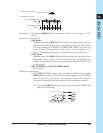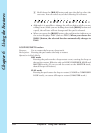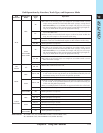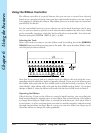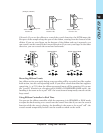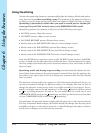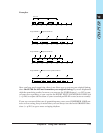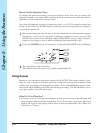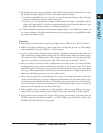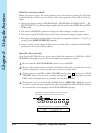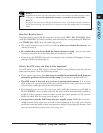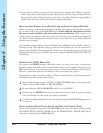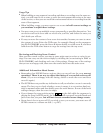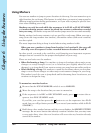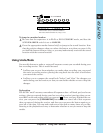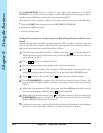
Chapter 6 Using the Features 177
CHAPTER 6
●
To change the entire setup instantly, either within the recorded song itself or on the
fly during realtime playback. This is extremely useful because:
1. It makes it possible for you to switch to an environment that you have already
tried out and that you know will sound good.
2. It allows you to change all settings on all tracks instantly: something that is
physically impossible to do when operating knobs, knob-function buttons, and
pads manually during realtime recording or playback.
●
To hold complete or partial environments temporarily as you build your songs, or
to create temporary backup environments when testing out new possibilities that
you may not want to keep.
Overview
●
Each song contains memory space for eight scenes: TOP, A, B, C, D E, F, and G.
●
When you begin working on a new song (after setting the power on and loading
some samples) all scenes (TOP, A,...,G) are empty.
●
As you work on knob settings, mute settings, and effect settings for the song, you
will eventually arrange these settings into a configuration that you want to save.
You can store this configuration—the current environment—into a scene by hold-
ing down one of the scene buttons. (See “How Do I Save A Scene?,” below.)
●
Once you have saved stored the configuration into the scene, you can recall the
configuration at any time by briefly pressing the scene button. (See “How Do I
Recall A Scene?,” below.) If you record scene-button presses into your song, then
the song will automatically recall each stored environment as it plays past each of
these recorded button presses (scene-recall events).
●
Once you have saved an environment into a scene, it remains in memory until you
do any of the following: (1) store a different environment into the same scene, over-
writing the previously stored data; (2) initialize the environment (as described be-
low), so that the scene becomes empty, or (3) initialize the entire song or switch off
the power, deleting all content from all scenes.
●
Like samples, scene contents are stored together with the song. When you copy a
song, (from one song number into another), the scene contents are also copied.
●
Scene data is lost at power-off. If you wish to save your scenes, you must save all
SU700 content to a volume on disk. (→ p.287). When you reload the volume, the
SU700 will reload all of the scene data.



